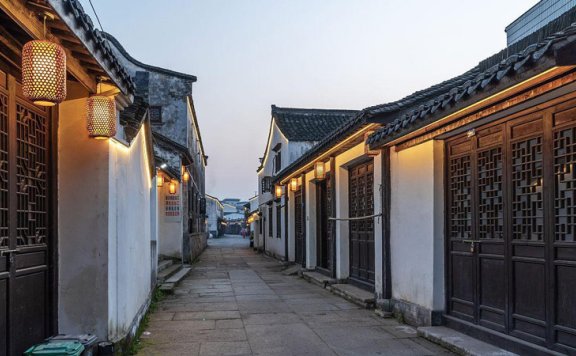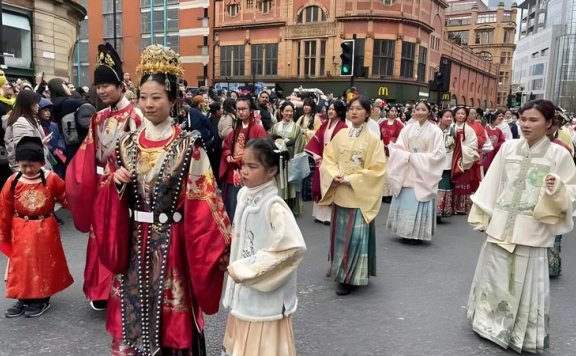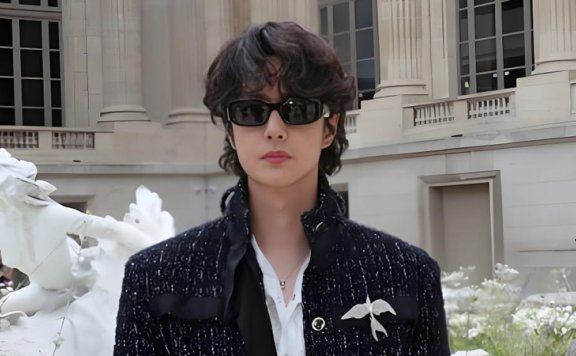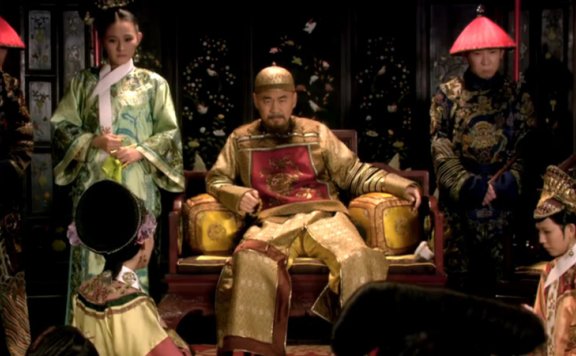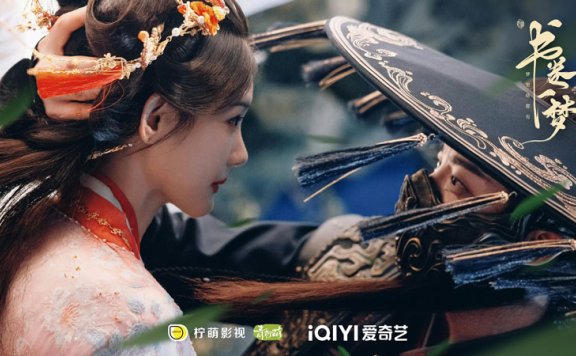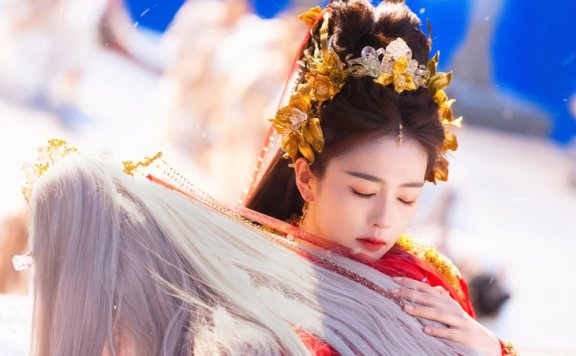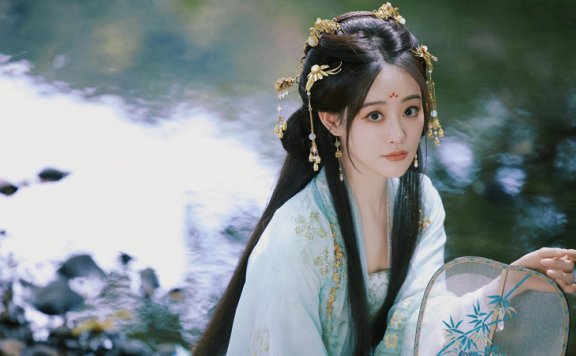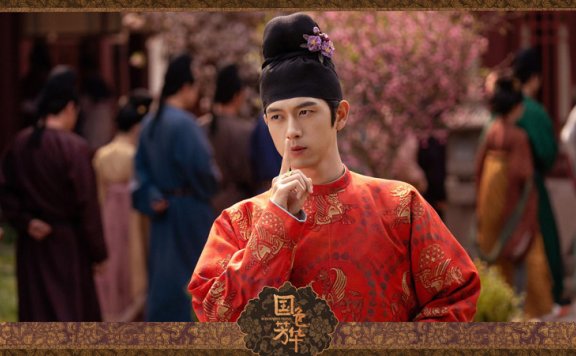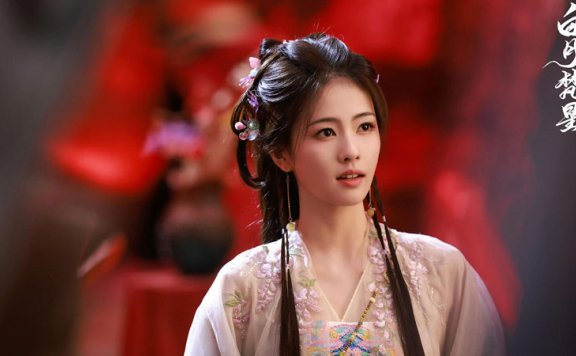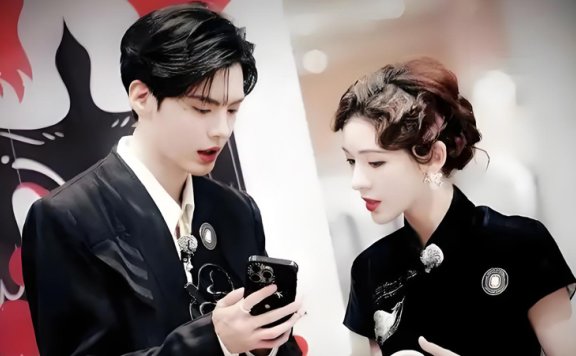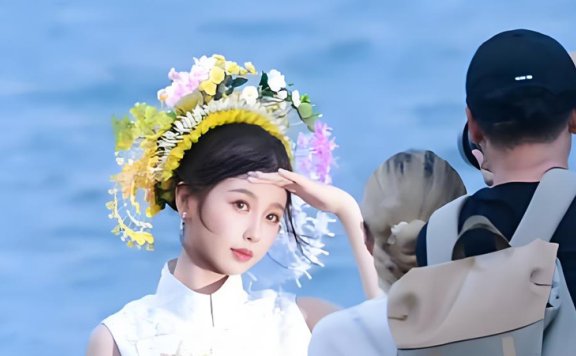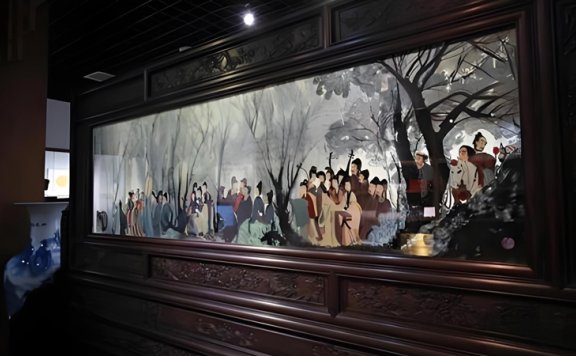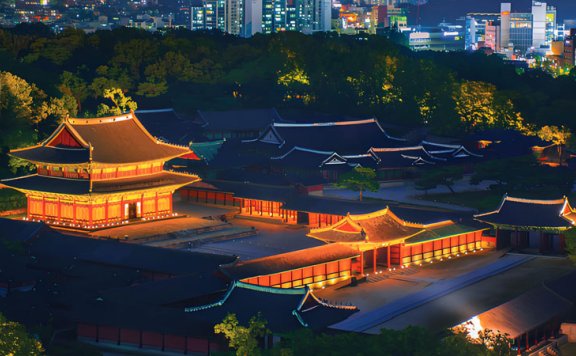Article
搜索结果:
-
Hanfu's Global Embrace in China's Ancient Towns
Summer 2025 witnesses a cultural phenomenon reshaping China’s tourism landscape. From mist-shrouded villages in Anhui to canal-lined streets of Shaoxing (绍兴), international visitors are trading T-shirts for Tang dynasty robes. This sartorial shift transcends fashion—it’s a tactile dialogue with history. As Indian student Adnan explores Keqiao Ancient Town, his crimson-sleeved arms gesture toward stone bridges, embodying a silent conversation between eras. Beyond Instagram moments, this trend fuels local economies and rewrites cultural exchange. Threads of Curiosity Adnan’s journey began with a simple observation: flowing sleeves against smartphone screens. "At home, we see hanfu in documentaries," he shares while adjusting his linen sash. "Touching embroidered phoenixes makes legends tangible." His family’s Shaoxing base became a springboard to Keqiao’s silk vendors, where textures bridged his Indian heritage with Ming dynasty motifs. Near Huangshan’s Xixinan Village, Brazilian siblings Maria and Pedro discovered shared symbolism. "Our Carnaval feathers mirror these crane patterns," Pedro notes, tracing gold-threaded birds. Their guide contextualized each stitch: "Cloud collars symbolize heaven’s embrace," she explained, linking cosmology to craftsmanship. For German retiree Helga, the ritual itself resonated. Seated before a Qing-style dressing mirror, artisans transformed her silver braid into coiled palace hairstyles. "This combing ceremony," she reflects, "feels like ancestral… -
Hanfu and Mamianqun: Traditional Attires Become Viral Hits
In eastern China’s Anhui Province, ancient aesthetics are rewriting modern economic narratives. Tax data reveals a 7.4% surge in textile and apparel sales from January to May 2025, driven by the explosive popularity of mamianqun (horse-face skirts) and Hanfu attire. This resurgence isn’t mere nostalgia; it’s a cultural reawakening merging heritage craftsmanship with digital innovation, positioning Anhui at the forefront of China’s "guochao" (national trend) movement. Stitching Success The mamianqun, characterized by its pleated panels and symbolic motifs, has transcended historical reenactments to dominate mainstream fashion. Social media influencers and festivals like the Hefei Hanfu Carnival amplified its visibility, transforming local workshops into supply chain hubs. Artisans now blend traditional dyeing techniques with AI-assisted pattern design, cutting production costs by 30% while preserving authenticity. Anhui’s textile factories report 40% higher export orders for silk-blend fabrics, catering to Southeast Asian and European markets. Provincial tax incentives for heritage crafts further enabled small businesses to scale rapidly. As one Hefei designer noted, "Young consumers seek identity, not costumes—they’re investing in wearable history." Heritage Reimagined Beyond textiles, Anhui’s intangible cultural heritage fuels diverse industries. Ceramics infused with Longkiln techniques saw 8.5% revenue growth, while bamboo-woven handbags and lacquerware suitcases boosted box retail sales… -
2025 Beijing Boosts Cuisine to Spur Consumption
Summer's heat ignites Beijing's dining scene, but this year, traditional discounts take a backseat to cultural immersion. Restaurants report a 5% surge in both customers and revenue compared to last summer, driven by innovative blends of heritage, storytelling, and local flavors. From noodle workshops in bustling hutongs to panda-themed feasts and lakeside craft markets, eateries are transforming meals into multidimensional journeys. This shift responds to travelers craving authentic connections beyond taste, proving that Beijing’s culinary identity thrives when chefs become culture keepers. Noodle Literacy Takes Root At Fangzhuang 69 Noodle House, queues stretch longer as tourists master the art of eating Zhajiangmian (炸酱面). Servers demonstrate the "three-step ritual": coating noodles with oil, ladling rich soybean paste, and artfully arranging 12 vibrant seasonal toppings like shredded cucumber, radish, and young garlic. Patrons aren’t just eating; they’re decoding centuries of northern Chinese culinary tradition. Demand for cultural context is palpable. Over 40% of visitors now ask about noodle history and vegetable symbolism, prompting staff training in storytelling techniques. Waiters explain fermentation secrets of the savory brown sauce and the significance of seasonal toppings, even offering key phrases in multiple languages. This cultural appetite has tangible impacts. Monthly garlic consumption alone exceeds 15… -
2025 Paris Fashion Week: Chinese Stars Shine Brightly
Paris Fashion Week’s autumn/winter showcases witnessed an undeniable shift: Chinese celebrities commanded global attention with distinctive aesthetics and unapologetic individuality. Moving beyond traditional "ambassador" roles, stars like Wang Yibo, Xin Zhilei, and Dilraba delivered masterclasses in personal style, blending Eastern sensibility with avant-garde Western design. Their presence wasn't merely noted; it became the focal point of social media buzz and front-row photography, signaling a new era where Chinese influence reshapes high fashion narratives. From Wang Yibo’s (王一博) youthful reinvention to Xin Zhilei’s (辛芷蕾) sharp elegance and Dilraba’s (迪丽热巴) ethereal grace, each moment resonated far beyond the runway, cementing their status as true style innovators. Boyish Charm, Reimagined Wang Yibo’s arrival at the Chanel show shattered expectations. Gone was the aloof idol; in his place stood a sun-kissed, tousle-haired vision of relaxed sophistication. His artfully messy "lamb's wool" curls framed a face radiating ease, a stark contrast to previous polished looks. The choice of Chanel’s AW25 glittering boucle tweed jacket was inspired, its intricate craftsmanship amplified by playful touches: a single swallow brooch pinned low and layered COCO CRUSH rings. The ensemble masterfully balanced haute couture grandeur with an approachable, almost rebellious, boyish energy. His interaction with the crowd—removing sunglasses to… -
Why Chinese Dramas Can Never Seem to Get Emperors Right
From the moment Qin Shi Huang declared himself the first emperor in 221 BCE to the abdication of Puyi in 1912, China had more than two millennia of imperial history. Yet strangely enough, it wasn't until much later that Chinese audiences began seeing emperors on their screens. Before the 1980s, non-realist genres were few and far between on Chinese television—let alone any depictions of emperors. When Emperors Finally Entered the Frame According to media scholars, the earliest TV portrayals of emperors date back to 1982. That year, Shanxi TV produced Anecdotes of the Tianbao Era (天宝轶事), Shanghai TV aired Prince Qin Li Shimin (秦王李世民), and Hebei TV released Consort Yi (懿贵妃). All of these shows predate Nurhaci (努尔哈赤), a better-known 1986 drama by China Central Television (CCTV), which is often mistakenly believed to be the first of its kind on the mainland. On-screen emperors in Chinese TV dramas generally fall into two categories: the "official history" type and the "unofficial tales" type. Nurhaci is an example of the former. Directed by Chen Jialin—later crowned "the first director of Chinese historical drama"—the show laid out a grand, epic style that would set the tone for later historical blockbusters like Tang Minghuang,… -
When The Feud and A Dream Within A Dream Try Short-Form Tricks
Following the success of The Double (墨雨云间), Yu Zheng's heavily promoted The Feud (临江仙) has ignited the summer fantasy romance market. Riding on the momentum of Wonderland of Love, Huanyu TV seems to have found a new formula—recasting long dramas in the mold of short-form content. The strategy: emotional punch over plot depth, and a binge-friendly pace over traditional slow burn. An "immortal romance" centered on a so-called "marital war," The Feud drew both praise and backlash, yet undeniable buzz. Its iQiyi popularity index climbed past 9500, though whether it can break 10,000 remains to be seen. Written by Zhao Na and Ren Yanan, directed by Zhi Lei and Guo Hao, and starring Bai Lu, Zeng Shunxi, He Ruixian, and Chen Xinhai, the drama tells the twisted tale of Hua Ruyue (Bai Lu) and Bai Jiusi (Zeng Shunxi)—immortal sovereigns doomed to love, hate, and marry/divorce three times across realms. Promotion was intense. Within a day of airing, the show's index surpassed 9300, peaking at 9514 by day three. Yet buzz began to slow. Nonetheless, 1873 trending topics—152 on Weibo's Hot Search, 637 on the Hot Rising list, and 305 on the Entertainment list—kept attention strong. Yunhedata confirmed a 12% market… -
The Making of The Feud: Chatting with Director Guo Hao
Finally! The moment we've all been waiting for—the grand finale of The Feud aired! All the suspense and anticipation exploded in Episode 32. When Hua Ruyue travels back through parallel timelines, showing her mortal self everything Bai Jiusi has done... even though the past can't be undone, isn't making amends its own kind of perfect ending? That moment when they declared, "Never to be parted again, in heaven or on earth," melted away all those lingering "what ifs" for the audience! This xianxia series, built on "cross-temporal storytelling," shattered the usual BE (Bad Ending) vs. HE (Happy Ending) mold. The Feud pioneered its own PE (Perfect Ending) path. It's like finding a key to unlock emotional knots—not obsessing over philosophical questions of karma, or wrestling with clear-cut notions of right and wrong. It finds wholeness within regret, showing viewers that the courage to reconcile with yourself is the real power that transcends time and space. The finale's explosive buzz? That energy built up for weeks. Before launch, it smashed past 4 million advance viewers on just one platform. Once it aired, it broke records: "Highest premiere day heat ever on iQiyi (2025)," "Fastest to hit 100 million bullet comments," and… -
My Three Years Animating A Record of a Mortal's Journey to Immortality
"Han Li is a protagonist utterly resolute in his pursuit of the Dao." This simple assessment, spoken by Lin Yu'ang, director of Seasons 3 and 4 of the animated series A Record of a Mortal's Journey to Immortality (凡人修仙传), during a live stream with Bilibili creator, reveals his deep understanding of the character. Having evolved from a devoted fan of the original novel to its adaptor, Lin knows Han Li's "Dao heart" is far from an empty concept. It's rooted in his childhood longing for the wider world beyond his mountain village. It's his desperate clutch at the lifeline offered upon discovering his spiritual roots—a chance to alter his destiny. It's the hard-won realization that stopping his journey means only one end: utter annihilation. "On the immortal cultivation path," Lin notes, "a single misstep leads to ruin, to complete destruction." From the sprawling 7.7-million-word source material, Lin sees Han Li's journey at its core as a "chronicle of solitary cultivation." Han Li must train diligently in obscurity to advance his power. He must hide his strength and tread carefully against formidable foes to snatch any chance of survival. And when acquiring rare treasures, extreme discretion is paramount to avoid covetous… -
Li Yitong's Bold Performance in A Dream Within A Dream
The summer drama season of 2025 is in full swing, and Li Yitong's (李一桐) latest series A Dream Within A Dream (书卷一梦) is generating serious buzz. Despite lacking the support of a big-name IP, this historical fantasy comedy has carved out its place in a crowded market with a gutsy, genre-bending premise—and a lead character who refuses to follow the script, quite literally. At the heart of this surge is Li Yitong's standout performance as Song Yimeng. According to multiple tracking platforms, Li's meticulous interpretation of the character has significantly boosted the show's reach. Her understated yet precise acting style allows the character—a fictional "paper doll" given life—to leap off the page. It's a compelling, layered portrayal that has become a new career milestone for the actress. A Character Who Fights Back A Dream Within A Dream is an original series that had already gained traction before its premiere, with over 3 million users signing up to watch on both iQIYI and Weibo. Once it aired, the show's unusual blend of genre self-awareness and quirky charm quickly caught fire. Within a day, it passed a heat index score of 2 on Datawin, a key metric in Chinese TV ratings. As… -
Ling Cage Season 2 Breaks 100 Million Views
Ling Cage Season 2 is finally here. Back when Season 1 first aired, it made a strong impression with its high production value and detailed worldbuilding. It even picked up some heavyweight awards. No surprise then that fans have been waiting—some would say suffering—for the second season to drop. That wait? Five years long. Yes, some online comments still mock it with terms like "techno-cultivation" (科技修仙)—a tongue-in-cheek way of saying it mixes high-tech settings with the spiritual journey style usually found in xianxia fantasy. But jokes aside, the numbers speak for themselves: over 100 million views and counting. I still remember binging Season 1 back in 2019, and from then to now—through the special episodes and that sneak-peek prequel—we were handed so many carefully planted clues. They were exciting, clever, and, for me at least, unforgettable. One line in particular jumped out at me this season: "Is the body a prison for the soul?" And that was the moment I paused. Could Chinese philosophy be the key to breaking the Western mold that's dominated post-apocalyptic storytelling for decades? Think about it. In the global market, apocalyptic stories have always been a go-to for exploring human nature and survival. Western narratives… -
Guide to Li Xian's 3 Captivating Period Dramas
As the dazzling lights of Chang'an illuminate screens worldwide in 2025's blockbuster In the Name of Blossom (锦绣芳华), Li Xian (李现) cements his reign as Chinese historical drama's most magnetic leading man. With his piercing gaze and effortless versatility, Li transforms from a peony-adorned Tang aristocrat to a supernatural detective and vengeful swordsman—each performance radiating intelligence and emotional intensity. Let's explore every era he has conquered. In the Name of Blossom 锦绣芳华 Aired: June 30, 2025–Present Period Background: High Tang Dynasty (circa 713-756 AD), capturing Chang'an's opulent zenith where diplomatic grandeur and luxury masked volcanic political unrest. Genres: Political conspiracy, feminist enterprise, war romance. Adapted From: Sequel to Yi Qianzhong's acclaimed novel Guo Se Fang Hua. The narrative ignites when County Princess Li Youzhen, consumed by envy and political malice, burns He Weifang's (Yang Zi) peony garden—a thriving symbol of female economic independence in Tang-era Chang'an. This act of sabotage forces Weifang, a gifted horticulturist, into an unlikely alliance with Jiang Changyang (Li Xian), the enigmatic "Flower Envoy." Publicly, Jiang embodies aristocratic decadence; privately, he orchestrates a dangerous plot to dismantle Prince Ning's treasonous rebellion against Emperor Xuanzong. Their partnership evolves from transactional necessity to profound loyalty against the backdrop… -
Every Wuxia Film Owes Something to This One
Dragon Inn sits in the middle of a desolate desert, looking like just another pit stop for weary travelers. Its thatched roof and mud-brick walls blend into the dry, rocky landscape that stretches for miles. A few strings of chili peppers and bundles of husks hanging on the walls are the only splashes of color. Inside, the layout is bare but orderly: a few wooden tables, and a staircase that leads up to some narrow rooms on the second floor. The place is set somewhere on the northern frontier of China, remote and anonymous—meant to be a quiet, forgettable location. A Standoff Under One Roof But when it first appeared on screen in King Hu's (胡金铨) Dragon Inn (1967), a group of mysterious men were already walking toward its door. You just knew trouble was about to walk in. Like the saloons in Westerns or the empty suburban houses in horror films, the humble setting becomes the perfect arena for a showdown. The flimsy walls and paper windows won't keep anything out. If A Touch of Zen—the three-hour epic Hu made four years later—is considered his most imaginative work, then Dragon Inn is where his visual language becomes the most… -
Bai Lu's Triple Win: Acting Range, Commercial Clout, and Industry Influence
In today's fiercely competitive film and television landscape, only a rare few actors manage to level up across all fronts—critical acclaim, commercial value, and industry influence. Among the standout talents of the post-90s generation, Bai Lu has emerged as a model of multi-dimensional growth, propelled by the positive feedback loop between her on-screen performances and market response. As the summer 2025 season kicked off, Bai Lu's costume fantasy drama The Feud landed with impact. Not only did it shoot straight to the top of DeTavin's weekly rankings for historical dramas, but it also cemented her status as the only female lead on iQIYI's platform to headline two shows that surpassed the coveted 10,000 popularity index. What makes The Feud's success even more impressive is that it didn't rely on a big-name IP. Instead, it captured viewers with a tightly written original script and an unconventional, anti-cliché narrative. As the plot deepened, audience engagement soared—within just nine days of release, pop-up comment interactions exceeded 100 million, and the DeTavin buzz index peaked at 2.5, pushing the show past the 10,000 heat threshold. At the heart of this breakout was Bai Lu's portrayal of Li Qingyue (also known as Hua Ruyue). Her… -
Zhang Yuxi Received Praise for Wearing Cheongsams
When ordinary tourists become accidental paparazzi, magic unfolds. Recently, a Chinese couple vacationing in Paris unintentionally documented entertainment gold: actors Bi Wenjun (毕雯珺) and Zhang Yuxi (张予曦) filming the variety show Paris Partners (巴黎合伙人). Their spontaneous reactions—captured in viral social media posts—reveal more than celebrity glamour; they showcase humanity’s universal appreciation for authenticity. Unlike staged red-carpet moments, this genuine encounter between stars and strangers highlights how unscripted interactions resonate across generations. The couple’s unfiltered admiration, especially their playful nod to Zhang’s comfy sneakers paired with elegant qipao, sparked nationwide delight. This incident isn’t just about fame—it’s about relatable joy in unexpected connections. Authenticity Wins Hearts Celebrity images often live in curated digital ecosystems. But here, Bi and Zhang’s charm transcended screens. The parents’ immediate praise—“What a handsome young man!” and “Such a beautiful girl!”—came without influencer jargon or fandom bias. Their compliments reflected raw, cross-generational appeal. Bi’s crisp casual wear exuded approachable coolness, while Zhang’s qipao-sneaker fusion balanced tradition with modern comfort. What impressed most wasn’t their looks but their conduct. Amid bustling Parisian streets and curious onlookers, both stars maintained warm professionalism. No rushed exits or security barriers—just patient smiles. This dismantles the “diva” stereotype, proving respect leaves louder… -
Yu Shuxin is Wearing Zanhua Hairpin in Seaside
A playful wink, a gust of salt-kissed wind, and a single fresh blossom tucked into flowing dark hair – this seemingly simple moment, captured on the sun-drenched Fujian coast, has propelled Yu Shuxin (虞书欣) into the social media stratosphere. Far from the typical glamorous studio shoot, these candid behind-the-scenes glimpses from the set of her upcoming drama, Road To Success (灿如繁星), showcase a different kind of star power: effortless, authentic, and deeply connected to its breathtaking seaside setting. Yu Shuxin, shedding elaborate costumes for a breezy white dress, transforms the shoreline into her runway, proving that true radiance often blooms from unadorned simplicity and genuine joy. Her spontaneous interaction with the camera, particularly the now-iconic wink, resonates not just as celebrity charm, but as a pure expression of delight in the moment, instantly captivating audiences and setting the internet ablaze with anticipation for the drama itself. Seaside Style Ditching ostentatious luxury, Yu Shuxin’s coastal look for Road To Success is a masterclass in understated elegance. Her attire, a fluid white dress seemingly washed in the hues of the ocean itself, speaks of comfort and ease. The real magic, however, rests literally on her head: a single, delicate wildflower plucked from… -
Young Designers Bridge Traditions at Wuhan Fashion Showcase
The runway pulsed with energy at Wuhan's Red T Fashion District on July 5th. Nearly one hundred young designers from universities across mainland China and Taiwan transformed fabric into dialogue, showcasing 38 finalist collections for the Fourth Golden Clothes Award. This event, part of the 19th Hubei-Wuhan Taiwan Week, became more than a competition—it evolved into a vibrant conversation about shared heritage and contemporary vision. Models moved beneath lights not just displaying garments, but carrying stories woven from ancient motifs and futuristic textiles, revealing how a new generation interprets identity through cloth and craft. Silk Roads Redrawn Layers of hand-dyed indigo flowed like mountain mist down the runway. One designer merged digital-printed Song Dynasty landscapes with biodegradable synthetics, creating gowns where past and future coexisted seamlessly. Another finalist reimagined Miao embroidery techniques using recycled thread, patterning jackets with geometric phoenixes traditionally stitched over months, now achieved with innovative speed without sacrificing artistry. The tactile richness of handwork met engineered fabrics unexpectedly. A collection from Taiwan featured modular clothing using magnetic Han-style closures, allowing wearers to reconfigure silhouettes instantly. This practical innovation honored traditional fastening methods while embracing adaptability for modern life. Judges noted how entrants sourced inspiration from regional textile… -
Threads of Time: Ancient Embroidery Meets Modern Dolls
In a workshop in Jiangxi, Wu Wanjing (吴婉菁) places a piece of ramie fabric embroidered with blue-and-white porcelain patterns onto a LABUBU doll. This moment captures more than a craftsperson at work; it embodies a deliberate conversation between millennium-old heritage and global pop culture. Xiabu embroidery, rooted in the unique texture of handwoven ramie cloth (often called "China Grass"), thrives not through rigid preservation, but through dynamic reinvention. Once adorning baby bonnets and household items carrying familial blessings, its distinct "transparent stitching" technique, mimicking the flow of ink wash paintings, now finds unexpected canvases. Museums safeguard its history, while designers and students actively reinterpret its language for contemporary eyes and wardrobes, proving this resilient textile art is far from frozen in time. Fabric with Character Ramie cloth possesses an inherent, irregular texture formed by its handwoven warp and weft threads. Each piece is genuinely unique, bearing subtle variations from the artisan's touch. This distinctive surface posed a significant creative challenge: traditional dense embroidery methods would completely obscure the cloth's natural beauty and tactile quality. Preservation demanded innovation. The solution emerged in the form of the "transparent void stitch," a technique specifically developed for Xiabu embroidery. This method allows silk threads… -
The Circular Wardrobe Revolution: Shanghai's Infinite Fashion Bazaar
Shanghai’s A.F.A ROJO Arts Space transformed into a vibrant hub of sustainable creativity this weekend. The Xiaohongshu "Infinite Fashion Bazaar" redefined urban style by turning forgotten garments into coveted treasures. Over 100 creators, 20+ vintage boutiques, and 30+ celebrity-donated pieces converged, proving that fashion thrives not through consumption, but circulation. This wasn’t just a market—it was a manifesto for conscious living, where discarded fabrics found new life and community connections sparked fresh trends. Swap, Don’t Shop At the heart of the bazaar lay the "Style Exchange Zone," a 6,000 sqm arena buzzing with sartorial diplomacy. Visitors traded pre-loved jackets, boots, and bags, each swap a silent protest against fast fashion’s waste. "These clothes once defined my past; now they’ll inspire someone’s future," shared one participant, clutching a newly acquired silk scarf. The space thrived on face-to-face interactions—strangers debated stitching techniques, shared closet confessions, and left with more than just items: they carried forward a philosophy where value outlasts vanity. Designer-led upcycling stations punctuated the zone. A plain tee morphed into a structured tote under precise scissors; shattered ceramics became mosaic brooches. These micro-workshops showcased sustainability’s tactile joy, transforming "waste" into heirlooms without a single new resource. The lesson echoed clear:… -
Seoul Eases Access: China Group Tours Get Visa-Free Future
South Korea is poised to significantly boost its tourism sector by potentially extending visa-free entry for Chinese group visitors indefinitely. This strategic move, currently under final review by government ministries including Justice and Culture, aims to accelerate economic recovery by targeting the crucial Chinese market. Building on a planned short-term trial starting late 2025, the policy could become permanent from 2026 onwards, signaling a long-term commitment to welcoming Chinese travelers. Concurrently, authorities are exploring options to expand this benefit to individual tourists in the future, recognizing the substantial economic impact of Chinese visitation. Bilateral Tourism Surges Recent statistics highlight the strong rebound in travel between South Korea and China. During the first quarter of 2025 alone, 1.12 million Chinese tourists visited South Korea, constituting 28% of all international arrivals. This momentum builds on the 4.6 million Chinese visitors recorded in 2024, a significant jump from 2.02 million in 2023, though still below the 2019 peak. The reciprocal flow is equally robust, with 912,000 South Koreans traveling to China in the first four months of 2025, marking a 48.5% year-on-year increase. Demographic diversification is underway. Korean data shows retirees joining youth travelers to China, drawn by affordable high-speed rail passes and… -
Luckin Coffee Launches in New York, USA
New York City, a global epicenter of coffee culture dominated by familiar green aprons, has a bold new contender. On June 30th, 2025, Luckin Coffee, China’s coffee giant, quietly opened its first two U.S. stores in Manhattan. Nestled near NYU’s Washington Square and in bustling Midtown, these sleek "PICK UP" shops immediately drew curious crowds. Forget simple translations; Luckin’s arrival marks a deliberate plunge into America's deep coffee waters, promising high quality, digital convenience, and famously competitive prices. But the real test lies not in strategy documents, but in the hands – and taste buds – of New Yorkers grabbing their first cups. First Sips: Surprise & Sweetness Initial reactions from American customers reveal intrigue and pleasant surprises, though not always the expected coffee punch. Alice Tecotzky, reporting for Business Insider, ventured in expecting coffee. Her Pineapple Cold Brew, however, tasted distinctly "like pineapple juice with pulp," a flavor she found pleasant but unexpected. Shaking it didn't fundamentally alter the profile. Her "Sunny Breeze" drink, blending blood orange and grapefruit, earned higher marks for its refreshing, tangy sweetness – though deemed more suitable for an afternoon pick-me-up than a morning caffeine fix. Others embraced the novelty. Bruce Leon, 53, appreciated…
